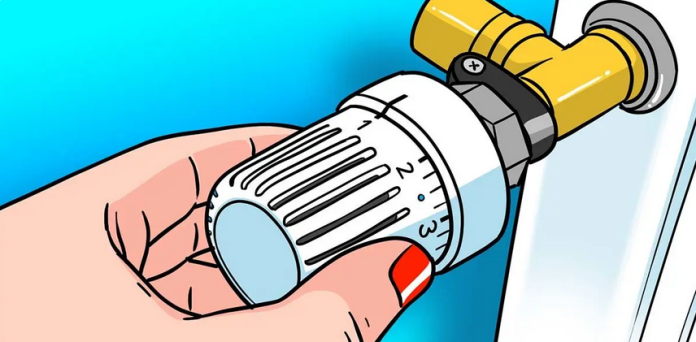As the heating season approaches, concerns about soaring energy bills may lead some to hesitate when it comes to turning on the radiators. However, there are effective ways to keep your home warm without breaking the bank. Properly adjusting your electric heating system can contribute to energy savings.
Understanding the symbols on your radiator’s thermostat knob is crucial. These symbols indicate various heat levels, and choosing the right setting is key to optimizing energy consumption. The thermostat valve, once installed, can be turned to select the desired comfort temperature.
Here’s a breakdown of the temperature levels represented by the numbered programs:
- 0 or “Snowflake” symbol: This setting doesn’t completely turn off the heating but maintains a temperature around 7°C. Useful when you’re away for a few days in cold weather to prevent freezing pipes.
- Level 1: Suitable for spaces like laundry rooms or staircases, heating up to 13°C.
- Level 2: Reaches around 16°C, recommended for sleeping areas.
- Level 3: Achieves a temperature of up to 20°C, optimal for most rooms in the house.
- Level 4: Heats the air to 22-24°C, suitable for warming the bathroom.
- Level 5: Reaches up to 28°C, making the room too warm; often not a practical setting.
- “Sun” icon: Ideal for larger rooms, maintaining a comfortable temperature around 19-20°C.
- “Moon” symbol (Night mode): Sets the temperature to around 16-17°C during sleep hours.
To save on heating costs, aim for an optimal indoor temperature between 18 and 22°C, preferably not exceeding level 4 on the thermostat valve. Level 3 is often sufficient for most cases, potentially leading to up to 20% energy savings when properly regulated.
For optimal comfort, the room you frequent the most should ideally be heated to 19 or 20°C. During sleep, consider lowering the temperature to 16 or 17°C. Additionally, activate the frost protection mode when away from home for an extended period.
Note that the thermostat valve serves as a mini-thermostat on each individual radiator, detecting ambient temperature and regulating the device’s power by adjusting the hot water flow. The valve opens wider as the temperature difference increases, gradually closing as the gap diminishes. This independence allows the radiator to reduce heat input until the desired temperature is reached, leading to water circulation interruption and radiator shutdown.
In conclusion, mastering the art of thermostat adjustment not only ensures a comfortable living space but also contributes significantly to energy efficiency and cost savings.
image source : sante plus mag










